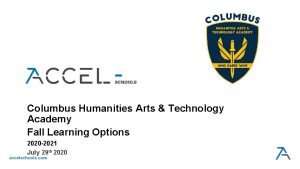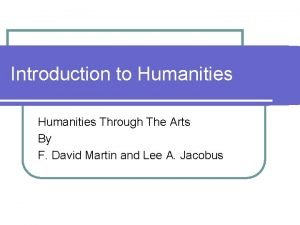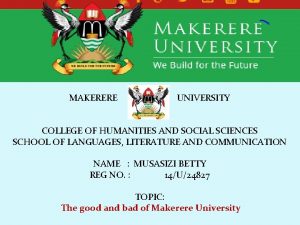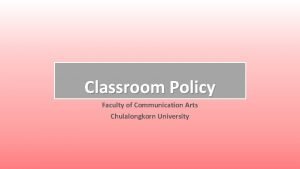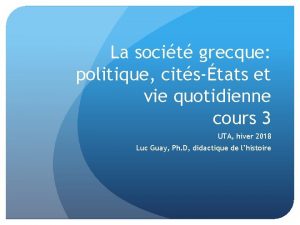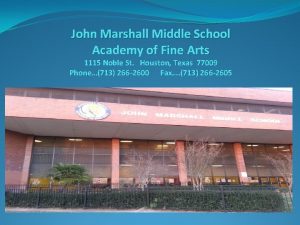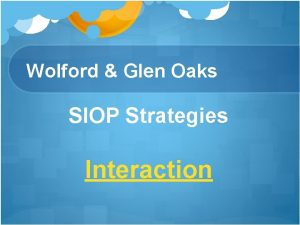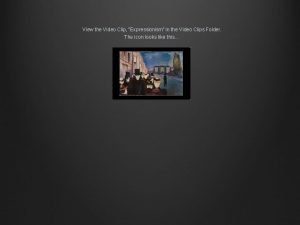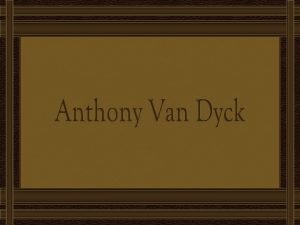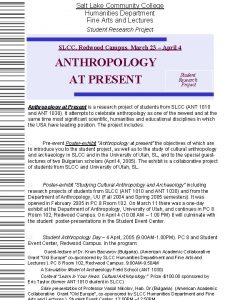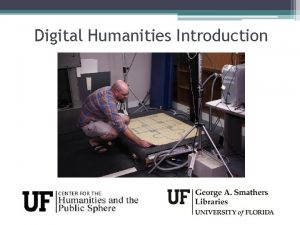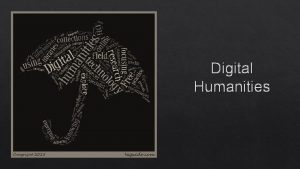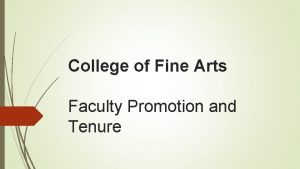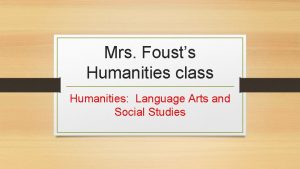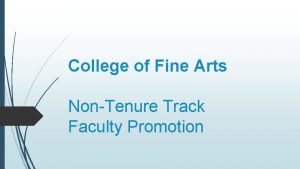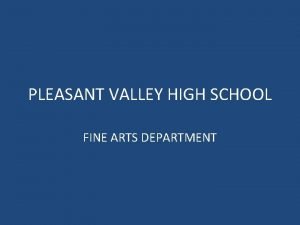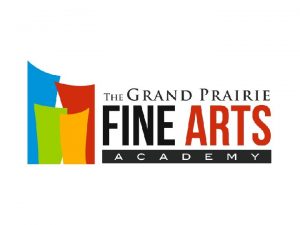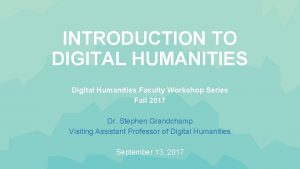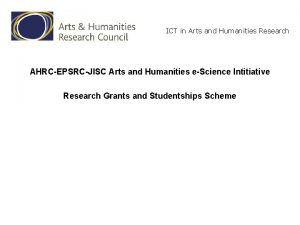College of Humanities and Fine Arts Spring Faculty













- Slides: 13

College of Humanities and Fine Arts Spring Faculty Meeting Student Learning in CHFA Majors and Assessment February 13, 2008 Program prepared by the CHFA SOA Committee

Addressing the Issues: Learning Outcomes n How did departments decide what learning goals and outcomes to assess?

Learning Outcomes continued: Paired Discussion: Has your department used any of these methods for identifying learning goals and outcomes? Would any of the methods discussed here work in your department?

Addressing the Issues: Faculty Involvement n How did you become involved in Student Outcomes Assessment (SOA)? n How has your department encouraged faculty commitment and involvement?

Faculty Involvement Continued: Paired Discussion: n In your department, how involved do faculty want to be/need to be with SOA? n What methods would you suggest for encouraging faculty commitment?

Addressing the Issues: Assessment Methods n How did you choose the assessment methods? n How were they developed? n What are some of your methods?

Critical Reading Rubric SOPHISTICATED COMPETENT PARTIALLY COMPETENT COMPREHENSION --Distinguished/extracted main ideas/thesis --Paraphrased clearly and concisely --offers examples/ideas that support main thesis/idea of the text --Distinguished/extracted main idea/thesis, but could be more clear: writing sample included additional or unnecessary ideas related to main idea/thesis; omitted ideas important to understanding the main idea/thesis --Paraphrased clearly, but could be more concise --Failed to recognize main idea/thesis --No apparent ranking of most important ideas/thesis --Needs to work on paraphrasing clearly and concisely --examples only partially support main idea/thesis ANALYSIS --Makes clear and comprehensive connections between examples and main idea/thesis --Makes somewhat clear connections between examples and main idea/thesis or, only some connections between examples and main idea/thesis are made --Links between examples and main idea/thesis need to be forged SYNTHESIS --Question has significant implications for strengths/weaknesses of author's thesis --Question has some implications for strengths/weaknesses of author's thesis --Question does not reveal an understanding of the strengths/weaknesses of the author's thesis

Addressing the Issues: Assessment Methods continued Paired Discussion: n What are some methods you have tried or some methods that you would like to try?

Addressing the Issues: Using the Data n What were some of the findings from your assessment? n What are you doing now with the results? n How is SOA connected to other curricular initiatives in your department?

Addressing the Issues: Using the Data Paired Discussion: n How are you connecting SOA with other curricular initiatives in your department?

Addressing the Issues: What Challenges Have You Faced in Implementing Assessment? n Some in our department are concerned that SOA is a fad and are unwilling to invest time and energy in it as a consequence. n Our small major has little data in any given year on which to base curricular decisions. n Confusion remains in our department about the purposes of assessment. Does it focus on individual students? The curriculum? n Our biggest challenge is remembering what we did last year and what we have promised to do next year. We live in the assessment present! n We wish assessment weren’t an “add on” and that we could embed meaningful assessment more often in what we already do in the classroom. n What are the respective responsibilities of department heads and faculty for assessment? Should heads be entirely “hands-off? ” n We don’t have time to do high quality assessment, which would require the collaborative examination of a large number of artifacts generated by students in our large major.

Challenges Continued: Paired Discussion: n From the list of challenges, on the previous slide, choose one to discuss. n Brainstorm solutions and write them on the giant post-it note.

Addressing the Issues: Future Directions Please fill out the following survey before leaving today. n How can individual departments in CHFA be supported in their SOA work? n What are some strategies for CHFA to use to continue to build a culture of assessment?
 Columbus humanities arts and technology academy
Columbus humanities arts and technology academy Arts and humanities endorsement
Arts and humanities endorsement Arts and humanities endorsement
Arts and humanities endorsement Ldap cuni
Ldap cuni B'faculty of humanities agh', b'poland'
B'faculty of humanities agh', b'poland' Humanities through the arts
Humanities through the arts College of humanities and social sciences
College of humanities and social sciences นิเทศ จุฬา
นิเทศ จุฬา Hegel three forms of art
Hegel three forms of art Fine arts
Fine arts John marshall middle school houston
John marshall middle school houston Siop interaction
Siop interaction Fine arts video
Fine arts video Fine arts
Fine arts
